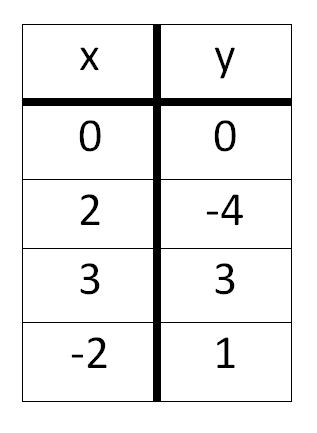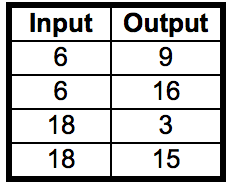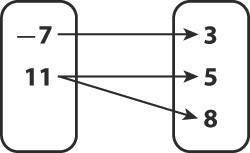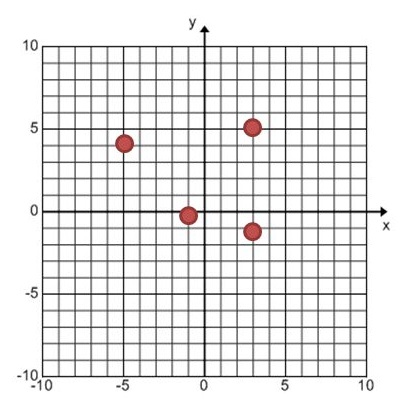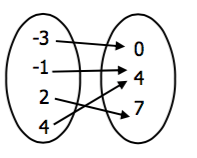
Domain and Range
Assessment
•
Michael Contakes
•
Mathematics
•
8th Grade
•
14K plays
•
Medium
Improve your activity
Higher order questions
Match
•
Reorder
•
Categorization
.svg)
actions
Add similar questions
Add answer explanations
Translate quiz
Tag questions with standards
More options
12 questions
Show answers
1.
Multiple Choice
A set of ordered pairs is called what?
the domain
a relation
a function
the range
2.
Multiple Choice
What is the domain of a relation?
the set of all x-values
the set of all y-values
3.
Multiple Choice
Which is the set of all y-values or the outputs?
Domain
Range
Relation
Function
4.
Multiple Choice

What is the range of the mapping?
{1, 2, 4}
{0, 1, 2, 3}
{0, 3}
{1, 4}
5.
Multiple Choice
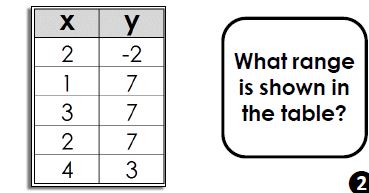
{-2, 3, 7}
[-2, 7]
{1, 2, 3, 4}
[1, 4]
6.
Multiple Choice

Which relation does the mapping show?
{(0, 1), (1, 2),(3, 4)}
{(1, 0), (2, 1), (2, 2), (4, 3)}
{(0, 1), (1, 2), (2, 2), (3, 4)}
{(1, 0), (2, 1), (4, 3)}

Explore this activity with a free account
Find a similar activity
Create activity tailored to your needs using
.svg)

Function Tables
•
5th - 6th Grade

Foundations Benchmark Review
•
2nd Grade

Functions, Functions, Functions
•
8th Grade

Function or Not
•
6th - 8th Grade

Logarithmic Functions
•
3rd Grade

Parent Function Review
•
11th - 12th Grade

Rational Functions
•
10th - 12th Grade

Function Table Quiz
•
3rd - 5th Grade
